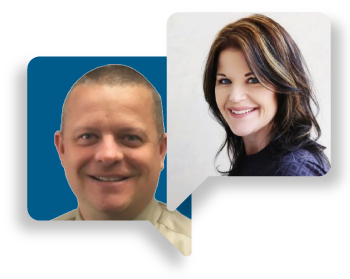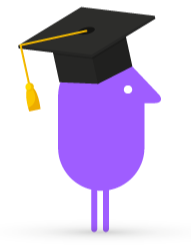Teaching Math Online
In this guide you will find lots of useful information on how you can create engaging digital math activities. There are videos, blogs and downloadable guides to help you along.
The best tools and tips for teaching math remotely
How to teach math online
Math has often been the subject left behind in the pen and paper era as more subjects move to digital learning. As a result of the 2020 Covid-19 pandemic, math educators and leaders have been forced to digitize their classroom assets and consider new ways of teaching. Allowing students multiple ways to express what they have learned is more important than ever before.
Three advantages of using technology in math instruction:
- Engages students and encourages group collaboration and discussion
- Provides multiple representations of math concepts
- Provides students with rapid sharing and teacher feedback
There's more than one way to solve a math problem.

In this podcast our experts discuss ways to approach teaching math digitally:
- designing math to navigate barriers
- remote and blended learning
- help students become experts in their own learning
Math resources for teachers
We want to equip you with the best tools and resources to help you confidently move your math instruction online.
We asked Eric Curts, Technology Integration Specialist for SPARCC in Canton, Ohio to help reboot your math classroom with Google tools. Eric has been in education for 29 years. He is a Google Education Trainer and Innovator, and provides training to schools, organizations, and conferences throughout Ohio and across the country. He is the author of the book "Control Alt Achieve: Rebooting Your Classroom with Creative Google Projects".
Learning Management Systems
There’s lots of places where math can be taught digitally and remotely. Below we’ve given you a quick overview of the most popular Learning Management Systems, some of which your school or district may already be using.
Canvas
Canvas is brimming with tools and content that Make learning simpler yet smarter—and keep everyone and everything connected from anywhere.
Brightspace
Brightspace: In-line annotations, assessment hub, grade book, video and audio feedback, and rubrics within Brightspace make it easy for you to assess any type of activity, including electronic and paper submissions and observational assessments in the class and within the field.
Schoology
Schoology has every tool your classroom needs and comes pre-integrated with more than 200+ tools, student information systems (SIS), and education platforms
Blackboard
Blackboard - With a modern, intuitive, fully responsive interface, Blackboard Learn™ delivers a simpler, more powerful teaching and learning experience that goes beyond the traditional learning management system
Moodle
Moodle - The world's free learning platform that helps you create effective online teaching and learning experiences in a collaborative, private environment
Online Math Platforms
There are loads of popular online math platforms that might spark your interest, let's take a look:
ALEKS
ALEKS is a research-based, online learning program that offers course products for Math, Chemistry, Statistics, and more.
Edgenuity
Learning happens in layers and levels. That’s why Edgenuity offers a full suite of K–12 online learning solutions for schools and districts that is backed by intuitive technology that gives educators the resources they need to plan lessons, execute goals, measure success, and intervene when necessary.
IXL Math
Gain fluency and confidence in maths! IXL helps students master essential skills at their own pace through fun and interactive questions, built in support and motivating awards.
Equatio
Equatio - We couldn't make a list of all the math teaching apps without mentioning Equatio. It allows you to create equations, formulas, and more, digitally. Helping to make math and STEM classes more accessible and engaging for every student.
Desmos
Desmos - This free suite of math tools, including the renowned Desmos Graphing Calculator and Scientific Calculator, are used annually by over 40 million teachers and students around the world.
Khan Academy
Khan Academy - This free resource is suitable for teachers and parents, it’s easy to use and can help fill gaps in student’s knowledge.
GeoGebra
GeoGebra is an interactive geometry, algebra, statistics and calculus application, intended for learning and teaching mathematics and science from primary school to university level
Prodigy
Prodigy - Connecting in class learning to practice at home, this free resource offers math games that make practice fun.
Engaging your students in math.
Keeping students engaged and interested in learning can be challenging. Add to that the move to remote and blended learning practices and you’ve got a challenge on your hands. This is especially true of math and STEM subjects when the topics can seem very abstract. We have pulled together some of our favorite ways to show math in action in a blog post.

Helping you to be the best online math teacher
We want to arm you with all of the tools and resources to help you be the best math teacher you can be. That’s why we asked our resident Universal Design for Learning (UDL) expert to demonstrate how to design your instruction to navigate typical barriers faced in the math classroom, and how you can use the UDL framework to design solutions upfront.
As a quick reminder the guiding principles are:
- Multiple means of engagement
- Multiple means of representation
- Multiple means of action and expression
We aren’t saying we want to take rigorous learning and make it easier for people that might struggle, we want every student to achieve their individual potential.
Here are some key focus points on how you can make math engaging for all your students:
- Proactively anticipating and removing barriers to learning
- Promoting high expectations through rigorous learning goals for every learner
- Providing options & scaffolding to help learners reach those goals
- Sharing power with learners
Ways in which an online math teacher can be effective could include providing engaging, interactive and meaningful activities that peak the interest of students and connect their brains to real life experiences.
It's also imperative that we allow our learners to show their understanding and comprehension in different ways. Whether it be our tools or other EdTech tools, providing student choice empowers learners and allowing them to collaborate using technology tools opens up a wealth of opportunities to absorb the curriculum.
Allowing students to use multiple means of expression is invaluable. Whether students show their understanding through handwritten interpretation, digital interpretation, audio recording, or by other alternate means allows for flexibility. It also shows that the teacher is preparing for students who come in with limitations and barriers.
A final point here, is that UDL opens the door for opportunities to our learners. The teacher should have the same learning goals and expectations for each of their students. It is important to hold each student to the same high standard as the next, but the manner in which we get to the solution can be eye opening to not only the student but can even make a teacher say “Wow, I never thought of that way to get to the answer.”
Equity in the Math Classroom
Back at the start of this school year we hosted a keynote with José Vilson, a math educator, blogger, speaker and activist in New York City, NY. José has written and spoken about education, math and race for a number of organizations and publications, such as The New York Times, Education Week and Huffington Post to name a few.
José shared what he thinks it means to be a math teacher working with students from diverse backgrounds.
You can also download a transcript if you prefer.
